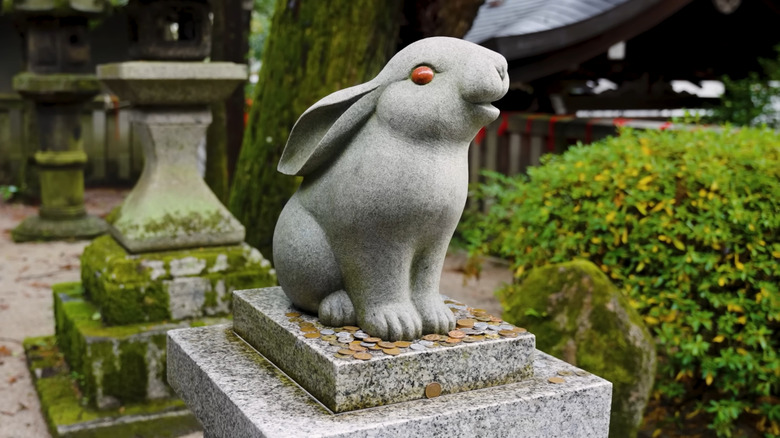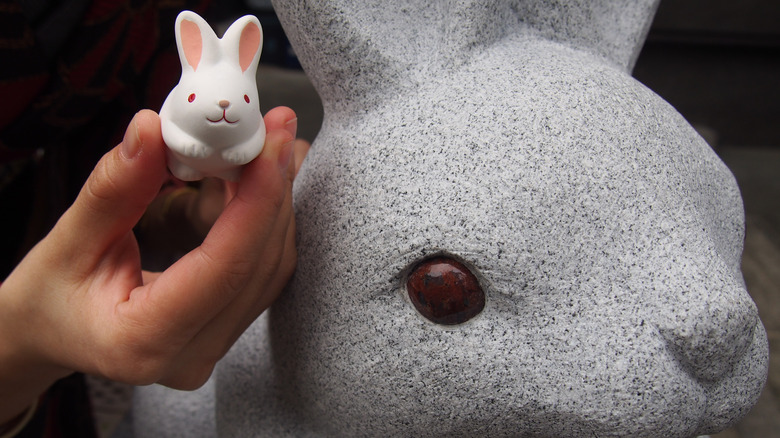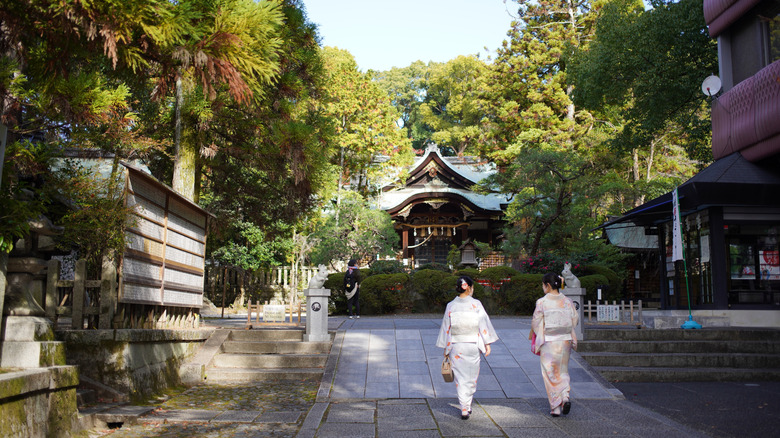As Japan’s seventh-largest city and former capital, Kyoto is filled with culture. The iconic city is famous for its bamboo forests, historic legacy, delicious food, and holy sanctuaries paying homage to religious deities, from Buddhist temples to Shinto shrines. There are an estimated 2,000 temples and shrines throughout Kyoto, ranging from impressive structures like Higashi Hongan-ji, the largest wooden temple in Japan displaying a bizarre artifact, and the Yasaka Kōshin-dō, a small shrine decorated in colorful balls said to represent abstinence from vices.
In one small neighborhood in the heart of Kyoto stands a unique Shinto shrine called Okazaki-jinja, decorated with an assortment of bunny statues, rabbit figurines, and hare-adjacent motifs, as well as bunny-themed trinkets and paraphernalia brought by visitors. However, Okazaki Shrine is not to be confused with Okazaki, a city situated between Osaka and Tokyo which also has incredible temples and castles. Leaning into its association with the animal most known for rapid reproduction and seemingly endless fertility, it has become a mecca for people seeking fertility blessings. At Okazaki Shrine, visitors can participate in prayers or ceremonies to ward off evil spirits, invoke fertility and safe childbirth, and beg favor by leaving bunny-themed tangible tokens as homage to fecundity.
Shinto originated in Japan and emphasizes harmony with nature, believing that deities and supernatural spirits called kami inhabit natural elements like lakes and trees. While Buddhism does not believe in any specific deity, it follows the teachings set forth by Siddhartha Gautama: primarily to meditate and develop good character in order to break the cycle of reincarnation and gain enlightenment. Both religions are prevalent in Japanese culture, and many of the country’s shrines and temples are active places of worship with ettiquette rules you should know before visiting.
Visiting the Okazaki Shrine and how to get there
Okazaki-jinja is the eastern corner of the four directional Shinto shrines built in 794 by Emperor Kanmu to protect the new imperial capital. Originally called Higashi-Tenno, it can be found in Kyoto’s Higashiyama District, or the Okazaki Museum District. Nicknamed Usagi-jinja, or “the rabbit’s shrine,” Okazaki-jinja faces east, the direction associated with the rabbit in Asian culture. The rabbit is also considered a messenger of the kami, and the animals were once abundant in the area, which may explain in part why the shrine was designed with so much bunny imagery. In 1178, the shrine received imperial commendation when an empress successfully gave birth to a future emperor, forever marking Okazaki Shrine as a pillar of fertility.
There are a few ways to request fertility blessings at Okazaki Shrine. It’s a rite of visitation to sprinkle water on the black granite rabbit statue and rub its belly, a plea for easy and healthy childbirth. You can also purchase a rabbit-decorated plaque, on which you can write wishes for fertility to leave at the shrine. Visitors sometimes bring their own small bunny-themed tokens in tribute, a tangible representation of prayer to fecundity. The shrine also sells rabbit amulets to evoke protection, conception, safe pregnancy, and healthy childbirth. You can even host weddings and purification ceremonies at Okazaki Shrine, manifesting a fertile union.
Kyoto is about 2.5 hours by bullet train from Tokyo. It’s easy to get there by bus or you can take a taxi to 51 Tenn-cho, Okazakihigashi, Ukyo-ku, Kyoto. From Kyoto Station, it’s about a 40-minute commute via public transportation.




